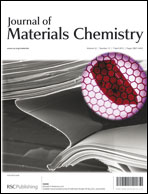Fluoropolymers are of prime interest as solution processable materials for electronic applications such as embedded capacitors, multilayer capacitors, and high-energy-density capacitors. Herein, for the first time, we investigated an environmentally friendly green aqueous modification of fluoropolymers, poly(vinylidene fluoride) (PVDF) for energy storage applications. The PVDF polymer was modified in aqueous medium by using bioinspired protein dopamine without any harmful toxic chemicals. Dopamine functionalization onto pre-irradiated PVDF polymer powder was carried out using a simple reflux method to strongly bind dopamine onto the PVDF surface. The resulting dopamine modified PVDF films exhibited excellent dielectric properties, when compared with the pristine PVDF polymer. The dielectric constant can be enhanced up to 32 with fairly low dielectric loss as compared to pristine PVDF. Furthermore, the modified films were found to have good flexibility; they could be curled as easily as pristine PVDF films. Since this method avoids the use of toxic chemicals, it may allow the application of modified PVDF not only for energy storage applications but also for other applications such as in biocompatible materials.

You have access to this article
 Please wait while we load your content...
Something went wrong. Try again?
Please wait while we load your content...
Something went wrong. Try again?


 Please wait while we load your content...
Please wait while we load your content...